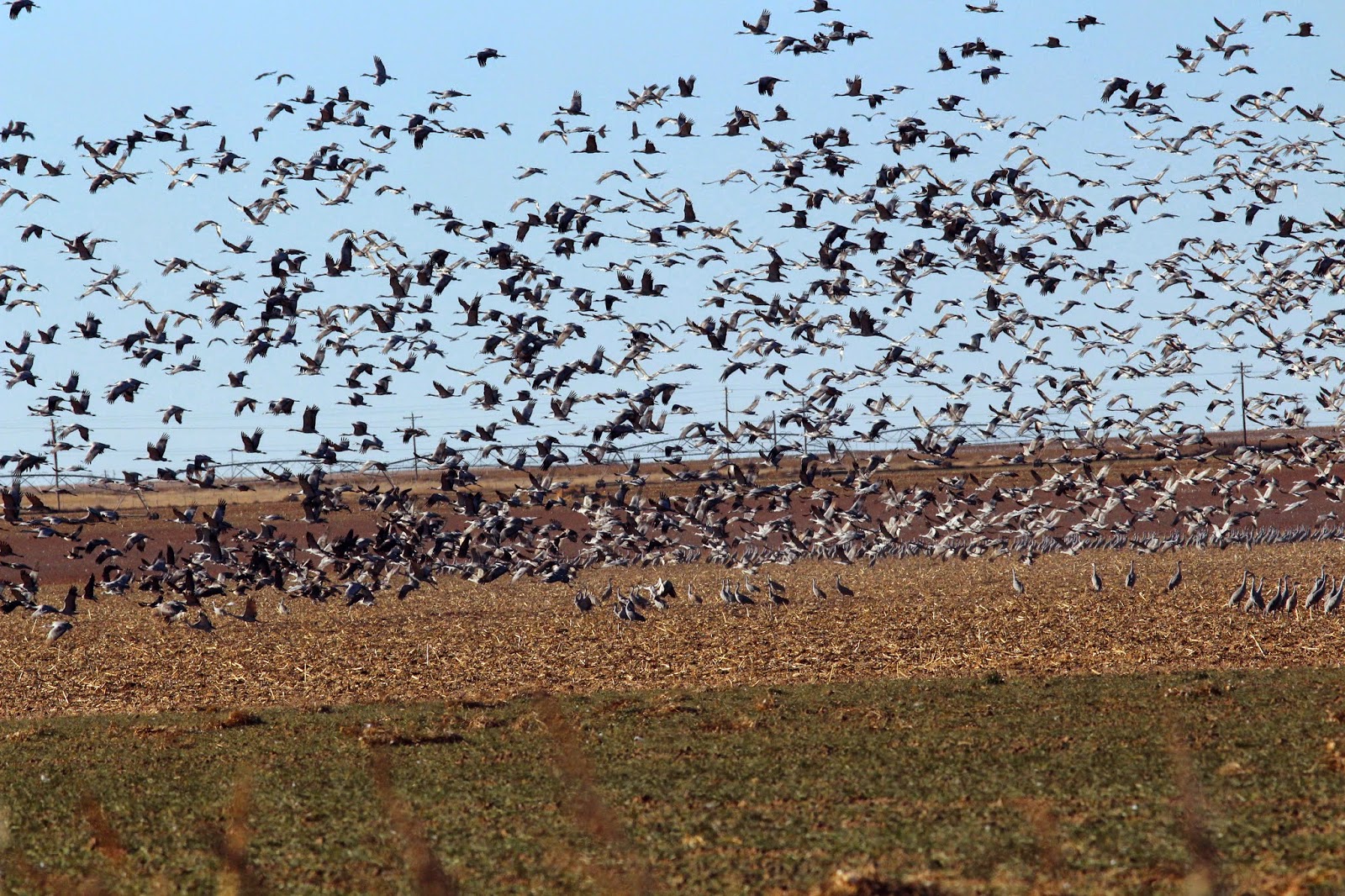Here's a nice pair of Mottled Ducks. The buffy face rules out the similar "Mexican" Mallard.
And a pair of Northern Pintails.
Willow Lake currently has plenty of water and was as birdy as I've seen it in years. A pair of Green Kingfishers zoomed up and down as I checked the lake from several overlooks. There may have been more than just a pair.
I frequently get close to green Kingfishers or I should say they get close to me, but they always place themselves so that I can't get a clear shot with the camera.
With cloudy weather this morning it was difficult to get enough shutter speed for good photos. I found a nice passerine flock with a friendly Ruby-crowned Kinglet, but this was the only non-blurry photo I could get. There's no mistaking the identity even from the rear.
A Black-crested Titmouse was far more cooperative.
Pintail Lakes was another story as most of them were drained as the refuge is putting in some new irrigation pipes. A pair of White-tailed Kites patrolled the grassy lake bed.
One of the smaller ponds held water and a nice flock of 35 Black-necked Stilts. They flushed as I approached but came right back down.
Here's my list for the day.
Santa Ana National Wildlife Refuge, Hidalgo, US-TX Dec 16, 2014 8:20 AM - 12:20 PM Protocol: Traveling 2.0 mile(s) Comments: Willow and Pintail Lakes and trails 60 species Fulvous Whistling-Duck 1 Greater White-fronted Goose 20 Gadwall 10 American Wigeon 3 Mottled Duck 3 Blue-winged Teal 100 Cinnamon Teal 2 Northern Shoveler 40 Northern Pintail 15 Green-winged Teal 20 Ruddy Duck 5 Plain Chachalaca 4 Least Grebe 3 Pied-billed Grebe 4 Great Egret 2 White-faced Ibis 8 Turkey Vulture 1 White-tailed Kite 2 Red-shouldered Hawk 1 Red-tailed Hawk 1 Sora 3 Common Gallinule 4 American Coot 50 Black-necked Stilt 35 Spotted Sandpiper 1 Greater Yellowlegs 2 Least Sandpiper 5 Wilson's Snipe 5 Inca Dove 4 White-tipped Dove 8 Mourning Dove 1 Belted Kingfisher 1 Green Kingfisher 3 Golden-fronted Woodpecker 3 Ladder-backed Woodpecker 4 Least Flycatcher 1 Eastern Phoebe 6 Great Kiskadee 8 Couch's Kingbird 2 White-eyed Vireo 4 Blue-headed Vireo 1 Green Jay 5 Black-crested Titmouse 6 House Wren 3 Carolina Wren 3 Blue-gray Gnatcatcher 6 Ruby-crowned Kinglet 4 Long-billed Thrasher 2 Northern Mockingbird 3 European Starling 23 American Pipit 8 Orange-crowned Warbler 5 Nashville Warbler 4 Common Yellowthroat 12 Yellow-rumped Warbler 10 Lincoln's Sparrow 3 Red-winged Blackbird 60 Great-tailed Grackle 2 Altamira Oriole 3 House Sparrow 5



















































